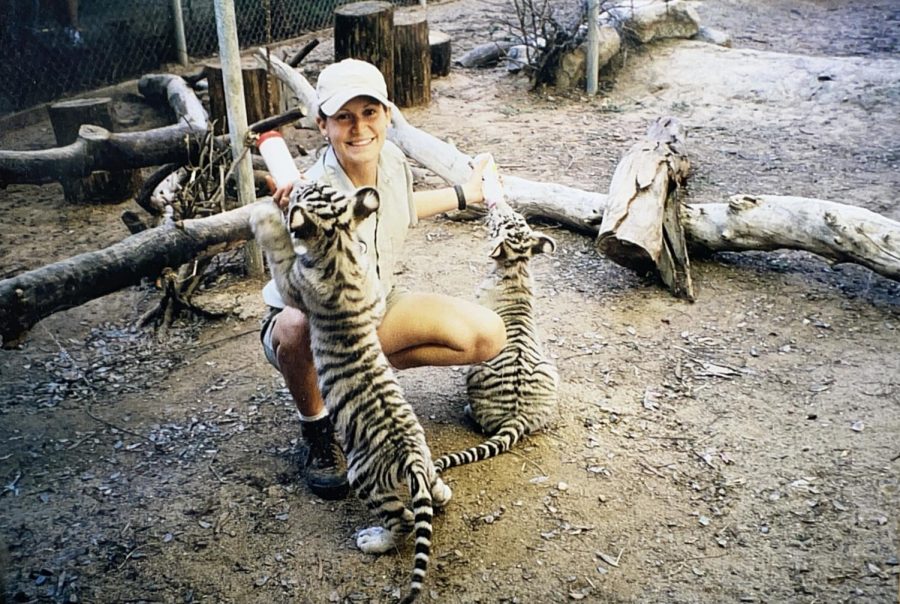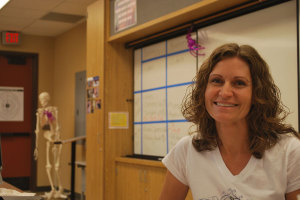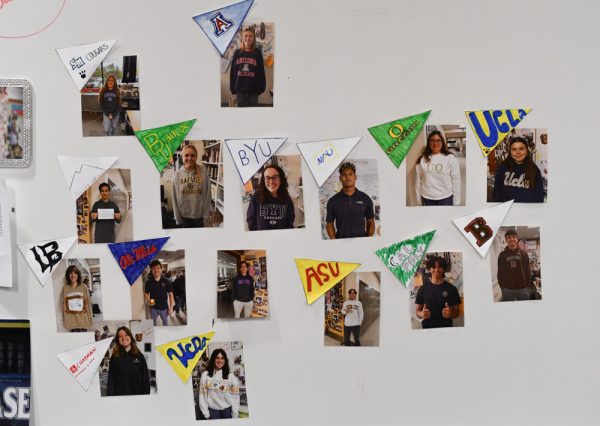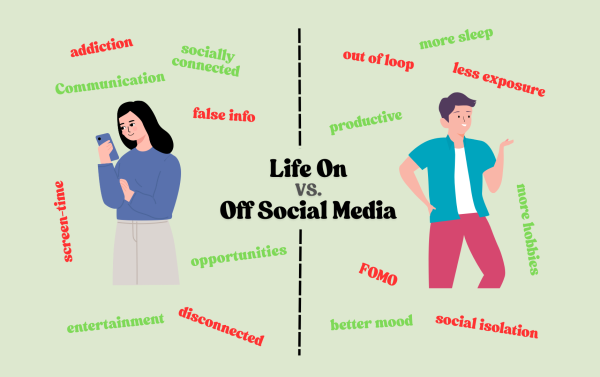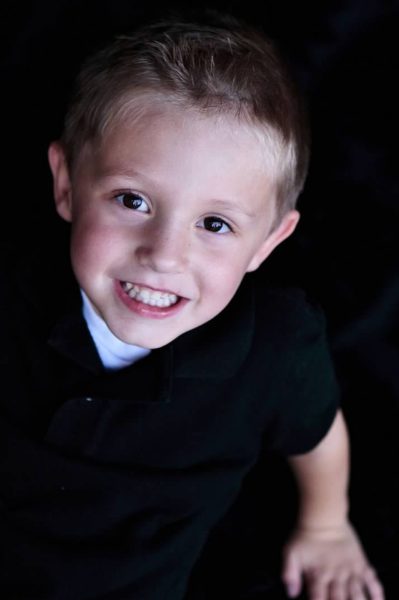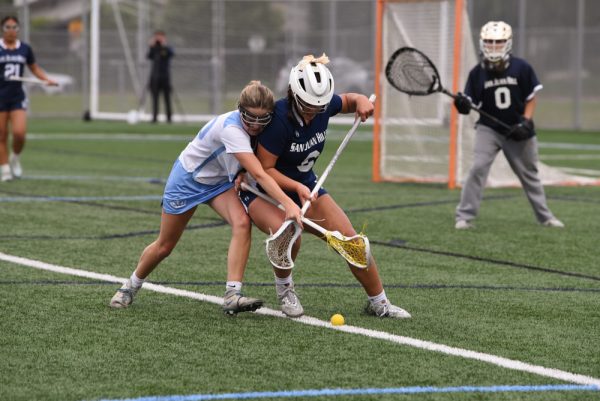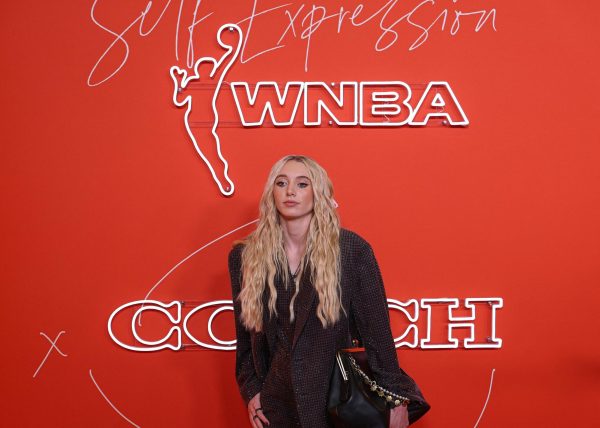Biology Teacher Shares Zoology Experience
Erin Rickert: SJH’s Resident Zookeeper
AP Biology and Anatomy/Physiology teacher Erin Rickert is not your average science teacher. Before teaching, she spent years working as a zookeeper, working to preserve endangered species, hand-raising animals, while receiving some scars along the way.
She first considered zoology as a possible profession in high school during a cat dissection in her anatomy and physiology class. Coincidentally, Rickert now teaches anatomy and physiology, in which her high school students dissect cats.
“I love that we do [animal dissections] because not every school does because they’re expensive. But that was one thing I really love about this school- that we dissect cats here. I had such great memories of doing that in high school and it made me think about science as a possibility.”
After being the first in her family to attend college, graduating with a degree in zoology, Rickert worked as an intern at the Philadelphia Zoo. She later landed a job at the Wildlife World Zoo in Arizona, her hometown. According to Rickert, zoology is a competitive field with limited job opportunities.
At the Wildlife World Zoo, zookeepers are in charge of different sections of the grounds. Rickert’s section was composed of African animals, including various birds and primates. She took care of black-footed penguins, new guinea singing dogs, meerkats, maned wolves, large cats like lions, tigers, leopards, jaguars, and more. Rickert even has the scars to prove it.
In one instance, Rickert was bit by a baby tiger. There was a newspaper reporter at the zoo to take photos of the tiger exhibit, so it was Rickert’s job to lure four tigers a safe distance away from the reporter with ground up horse meat. The large plastic sleeves the meat came in would endanger their health if the tigers were to get a hold of them. As Rickert dealt with the tigers, one of them grabbed a piece of plastic, so she had to take it away.
“He wasn’t being vicious or anything, he was just mad I took something away. Tigers bite other tigers and that’s totally socially acceptable, so since we [the zookeepers] were around them all the time they assumed that was okay. When I let go he got really mad and he proceeded to rip my sweatshirt with his claws and bit into my arm. I have scars on my arm and hand. I have to say I was shaking afterwards. I was totally shaking,” said Rickert.
In another frightening situation, Rickert had to transport giraffes from one end of the zoo to another. To move smaller animals, zookeepers would usually tranquilize them. However, it is dangerous to tranquilize giraffes due to their long legs and neck, because they suffer the risk of injuring themselves when they fall down.
In the early morning before the zoo opened, Rickert along with her coworkers took down the old exhibit, but it took some time before the giraffes started moving.
“Giraffes are funny. They could have a wall that was there for years and you could take it down and they won’t want to step over where the old wall was. So, we held up these big, black sheets to give them a visual to focus on, and we slowly walked behind them. But, it took a lot to get them to move. Giraffes will swing their head at you and kick at you so they did this many times, but once you get them to take that first step then they’ll just go,” said Rickert.
While working at the zoo, Rickert was involved in the group Species Survival Plan (SSP), an international program that keeps track of the genetics of endangered species in captivity. Rickert would take blood samples of animals and send them to the organization. SSP would make recommendations as to which animals should breed based on the genetics in the captive population, in order to keep a diverse genetic variation.
“Zoos get a bad reputation, but they’re one of the biggest organizations that actually contribute and do something for conservation,” said Rickert.
Rickert recalls the excellent treatment the animals were given at the Wildlife World Zoo. Because the animals were in the same exhibit every day, Rickert and her colleagues would provide behavioral enrichment. This enrichment would mentally stimulate the animals, mainly through scent.
“I would go get mounds of camel hair from the camel exhibit and put it in with the tigers and they would go nuts. They would roll in it; they would be all over it. We would provide whole horse bones for the African wild dogs. Just things to just keep them stimulated and try to mimic their natural environment as much as we possibly could. I mean of course we’d love for them all to be in their natural habitat but unfortunately their natural habitat is not so good anymore,” said Rickert.
Currently, reintroducing the species is not a viable option to keep endangered animals alive.
“When they live in captivity and they’re around people all the time, they get used to people and they lose that natural fear that wild animals have of people. And so it would be very difficult, they would probably become a problem [for large predators],” said Rickert.
Although difficult, Rickert found that the job was very rewarding. In many instances, she hand-raised many baby animals.
“We had a mom who was a red handed tamarin. They [red handed tamarins] carry their babies on their back but when she dropped her babies on the floor she wouldn’t go back to get them. She was a notoriously bad mom. So I raised them,” said Rickert.
At the time, Rickert lived on the zoo grounds, and would wake up every two hours at night to feed the tamarins through a syringe.
“But that was very rewarding because you knew you were saving them,” said Rickert.
She also hand-raised a baby penguin she named Wobble.
“It was so funny because baby penguins would stand on their [original] parents’ feet and the parents would regurgitate the food for them. So, the penguin would stand on my feet and I would feed it this flurry of chopped up fish. He got so attached to me that even on my days off he wouldn’t feed from other people. I used to have to come in and feed him because if anybody else tried to feed him he would bite them. I was very close with Wobble,” said Rickert.
Not to mention, Rickert delivered numerous baby goats at the zoo.
“We had goats that were part of the petting zoo and sometimes the babies are turned the other way and so they’re not coming out. I had one of the smallest hands at the zoo so I delivered a lot of baby goats. That was very rewarding because the mother would be in distress so I would reach in and help her deliver the baby goats,” said Rickert.
While it has many perks, zookeeping is a demanding job with long hours and a constantly changing schedule. Once Rickert decided she wanted to start a family, she went back to school and received a degree in education.
“I got my credential because I thought back to that anatomy class where I was so inspired and that teacher really motivated me to go into science, and so I wanted to do that for students,” said Rickert.
Rickert uses her experience every day to teach SJHHS students, and hopes to influence other students into STEM careers. She found that zookeeping was an incredible experience.
“It was just a very rewarding job. I loved it. I got to work outside all day which is so nice and you just built such strong relationships with all the animals,” said Rickert.
Your donation will support the student journalists of San Juan Hills High School. Your contribution will allow us to cover our annual website hosting costs.

Nikki is a senior at San Juan Hills High School, and this is her fourth year on The Express. As a Co Editor-in-Chief on the paper, Nikki is super excited...

